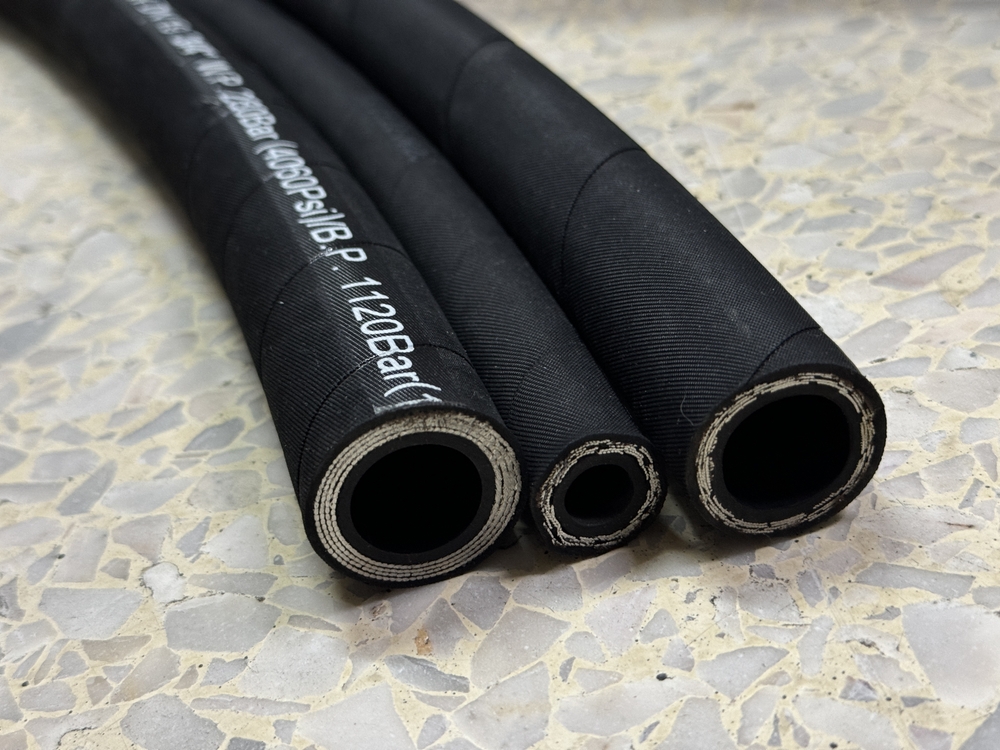
What Is the Difference Between SAE and DIN Hydraulic Hoses?
Hydraulic hoses are critical components in fluid power systems, ensuring reliable transfer of hydraulic fluids under high pressure. Among the most widely used standards in the industry are SAE and DIN. While both ensure safety and quality, they come from different organizations and have distinct requirements. Understanding the difference between SAE hydraulic hose and DIN hydraulic hose is essential for engineers, technicians, and equipment owners when selecting the right hose for their applications.
Origins and Standards
The main distinction between SAE and DIN hydraulic hoses begins with their origin and governing bodies. SAE hydraulic hose standards are defined by the Society of Automotive Engineers in the United States. These standards are widely recognized in North America and are primarily tailored to meet the needs of industries such as construction, agriculture, and automotive manufacturing.
DIN hydraulic hose standards, on the other hand, are developed by Deutsches Institut für Normung, the German Institute for Standardization. These standards are more common in Europe and align closely with ISO specifications, which gives them global relevance. DIN hoses are often associated with metric measurement systems, while SAE hoses typically use imperial dimensions.
The result of these different origins is that while both types of hoses serve the same function, they are built to meet different testing requirements, tolerances, and design philosophies. This can affect everything from pressure ratings to compatibility with fittings.
Design and Construction
When examining SAE hydraulic hose and DIN hydraulic hose, one will notice significant differences in design and construction. SAE hoses are categorized into different series based on pressure ratings, temperature ranges, and reinforcement layers. For instance, SAE 100R1 and SAE 100R2 refer to single and double wire-braided hoses, respectively, while higher series numbers often indicate increased complexity and performance capacity. The SAE system is incremental and straightforward, making it relatively easy to match a hose type to specific pressure and temperature requirements.
DIN hoses are constructed with slightly different principles. They are grouped according to their pressure resistance and dimensional tolerances under the DIN EN 853, 854, 855, 856, and 857 standards. DIN hoses often feature tighter dimensional tolerances and sometimes thicker outer covers, which can provide better resistance against abrasion and environmental wear. Additionally, DIN hoses are generally tested at higher pressure ratios compared to their SAE counterparts, which can enhance safety margins in demanding applications.
The construction of a hydraulic hose also involves reinforcement materials. Both SAE and DIN hoses may use textile braids, steel wire braids, or spiral reinforcements. However, DIN hoses tend to emphasize consistency and repeatability in manufacturing, reflecting the precision-focused approach of European engineering.
Performance and Application
The choice between SAE hydraulic hose and DIN hydraulic hose often comes down to performance requirements and regional preferences. SAE hoses are designed with North American applications in mind, where machinery and vehicles have historically been built around SAE standards. These hoses are widely available in the U.S. and Canada, making them the go-to choice for industries operating in these regions. They are particularly popular in heavy equipment, automotive hydraulics, and agricultural machinery.
DIN hoses, with their closer alignment to ISO standards, are more commonly used in Europe and internationally. Their tighter construction tolerances and higher burst pressure requirements often make them suitable for environments where safety regulations are strict or where equipment must be exported across multiple regions. DIN hoses are especially common in industrial machinery, marine applications, and equipment intended for global distribution.
Performance also includes temperature and chemical compatibility. Both SAE and DIN hoses are designed to handle a wide range of hydraulic fluids, including mineral oils, synthetic oils, and biodegradable alternatives. However, because DIN hoses are often engineered to stricter performance benchmarks, they may have slightly better resistance to high-temperature fluids and more consistent long-term durability in extreme environments.
Fittings and Compatibility
Another important area where SAE and DIN hydraulic hoses differ is in fittings and connection methods. SAE hoses typically use fittings that follow imperial sizing and thread standards such as JIC (Joint Industry Council) or NPT (National Pipe Thread). These are standard across North America and are easily sourced in those markets.
DIN hoses, conversely, use metric sizing and fittings that conform to DIN 2353 compression fittings or other metric-threaded connections. These fittings are more prevalent in Europe and regions where metric systems dominate. This difference in fittings means that while the hoses themselves might offer comparable performance, compatibility with existing hydraulic systems is often the deciding factor in which standard to use.
Mixing SAE and DIN hoses and fittings in a single system can be problematic without adapters, as the threads, sealing methods, and dimensions may not align correctly. Incompatibility can lead to leaks, reduced performance, or safety hazards. Therefore, when maintaining or designing a hydraulic system, it is critical to match hoses and fittings to the same standard.
Cost, Availability, and Global Considerations
Cost and availability are practical factors influencing whether a company chooses SAE hydraulic hose or DIN hydraulic hose. In North America, SAE hoses are generally less expensive and more readily available because of the established supply chain. In Europe and Asia, DIN hoses are easier to source and may offer cost advantages due to local manufacturing and distribution.
Globalization has blurred these regional boundaries to some extent. Many manufacturers produce hoses that meet both SAE and DIN standards, allowing companies to maintain flexibility depending on where their equipment is deployed. For example, a multinational company might prefer DIN hoses because they align with ISO standards, making it easier to ship equipment worldwide without worrying about regional compliance.
However, the cost difference can still be significant in localized operations. A contractor in the U.S. working exclusively with domestic equipment may find SAE hoses far more economical. Conversely, a European-based manufacturer exporting machinery to Asia or Africa may find DIN hoses more efficient in ensuring compatibility with international regulations.
Conclusion
The difference between SAE hydraulic hose and DIN hydraulic hose lies not only in their standards but also in their design, construction, performance, and regional use. SAE hoses, rooted in the standards of the Society of Automotive Engineers, dominate North America with straightforward categorization and compatibility with imperial fittings. DIN hoses, governed by the Deutsches Institut für Normung, emphasize tighter tolerances, higher safety margins, and compatibility with metric fittings, making them a natural fit for Europe and international applications.
Selecting between SAE and DIN is not merely a technical decision but also a strategic one, influenced by availability, cost, and the intended operating environment. While both serve the same fundamental purpose of safely transporting hydraulic fluids under pressure, the subtle differences in performance standards, fittings, and compliance can have significant implications for system reliability and safety.
As industries continue to globalize, the lines between SAE and DIN may blur further, with more manufacturers producing hoses that meet both standards. Still, understanding their unique characteristics helps engineers and decision-makers choose the most appropriate hose for their specific needs. Whether in a North American construction site or a European manufacturing plant, ensuring the right match of hose, fittings, and standards remains central to maintaining hydraulic system efficiency and safety.
Royal Brass Incorporated
Welcome Royal Brass Incorporated! We are your 3rd generation, family-owned, local hose supplier! Our family has dedicated our services to supplying northern California with all types of hoses, fittings, flanges, regulators, valves, adapters, and gauges. We pride ourselves on having the most extensive inventory in northern California. Our inventory ensures that we can fix most products on site, the same day. Here at Royal Brass Incorporated, we only hire qualified individuals who are trained in factory sales. Our fully stocked warehouses ensure that we can fill your hydraulic and pneumatic hose, tubing, and fitting needs on time, every time. High-quality customer service is our goal and has been since 1952. Stop by or contact us today!
Categorised in: Hydraulic Hose





